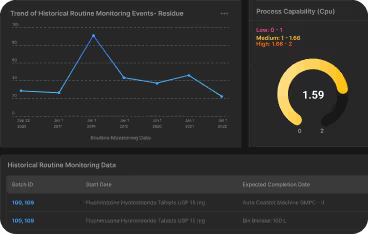Cleaning Agent Residue Limits
The meticulous control of cleaning agent residues constitutes a pivotal aspect of pharmaceutical manufacturing protocols. Given their direct contact with the equipment utilized in drug production, cleaning agents pose a significant risk of cross-contamination if residues are not adequately mitigated. This comprehensive discourse elucidates the methodologies underpinning the establishment of residue limits, thereby furnishing pharmaceutical professionals with essential knowledge for maintaining product purity and regulatory compliance.
Regulatory Paradigm and Health-Based Exposure Limits
The regulatory landscape, particularly the guidelines issued by the European Medicines Agency (EMA), underscores the imperative of establishing Health-Based Exposure Limits (HBELs). The EMA’s shift in language—specifically the inclusion of “medicinal” in its April 2018 update—introduces a nuanced differentiation between medicinal products and non-medicinal substances such as cleaning agents. This subtlety signifies that while direct regulation of non-medicinal substances' HBELs may not be mandated, there remains an implicit expectation for pharmaceutical entities to rigorously evaluate and establish prudent limits. This section advocates for a meticulous interpretation of EMA guidelines, enabling manufacturing entities to adeptly navigate regulatory frameworks while ensuring the safety of manufacturing processes.
Comparative Analysis of Residue Limit Determination Approaches
LD50 versus ADE-Based Methodologies
The delineation between the conventional LD50 approach and the more contemporary Acceptable Daily Exposure (ADE) based methodology reveals a critical evolution in residue limit calculation. The LD50 (Lethal Dose, 50%) approach, though historically prevalent, often results in conservatively stringent limits, potentially impeding practical application. Conversely, the ADE methodology, aligned with Risk Management Plan (Risk-MaPP) guidelines, offers a nuanced and scientifically robust framework, facilitating more balanced and operationally viable residue limits.
The ADE-based calculation, adhering to the formula:

provides a tangible framework for determining safe residue levels.
The LD50 based approach, albeit similar in execution, commences with the conversion of the LD50 value into a PDE value, incorporating a body weight factor and a predefined Modifying Factor (MF), typically set at 1000, thereby reflecting the toxicological impact more conservatively.
Application in Pharmaceutical Settings
Incorporating real-world scenarios into the discourse enhances the practical utility of the theoretical frameworks outlined. An illustrative example, delineating the calculation of residue limits across various equipment and product combinations, serves to bridge theoretical concepts with practical application, guiding professionals in the contextual application of these calculations.
Strategic Decision-Making and Compliance Implications
In the context of pharmaceutical manufacturing, the choice between LD50 and ADE methodologies transcends mere technical preference, implicating strategic decision-making and regulatory compliance. The inclination towards the ADE approach, recommended by contemporary regulatory expectations, underscores a commitment to scientific rigor and patient safety.
The nuanced comparison of residue limits derived from both methodologies can often reveal the overly conservative nature of LD50-based limits, potentially leading to the unnecessary exclusion of certain cleaning agents from manufacturing processes. Hence, the transition to ADE-based calculations is not merely a regulatory adjustment but a strategic imperative, ensuring the viability and safety of pharmaceutical products.
The establishment of cleaning agent residue limits is an integral component of pharmaceutical manufacturing, ensuring the safety, efficacy, and compliance of the resulting products. This discourse provides a comprehensive overview, from regulatory frameworks to practical calculation examples, guiding pharmaceutical professionals in the meticulous control of cleaning agent residues. Through informed decision-making and adherence to scientific and regulatory standards, manufacturers can uphold the highest levels of product purity and patient safety.

View and learn more about Cleaning Validation with our comprehensive list of resources





























